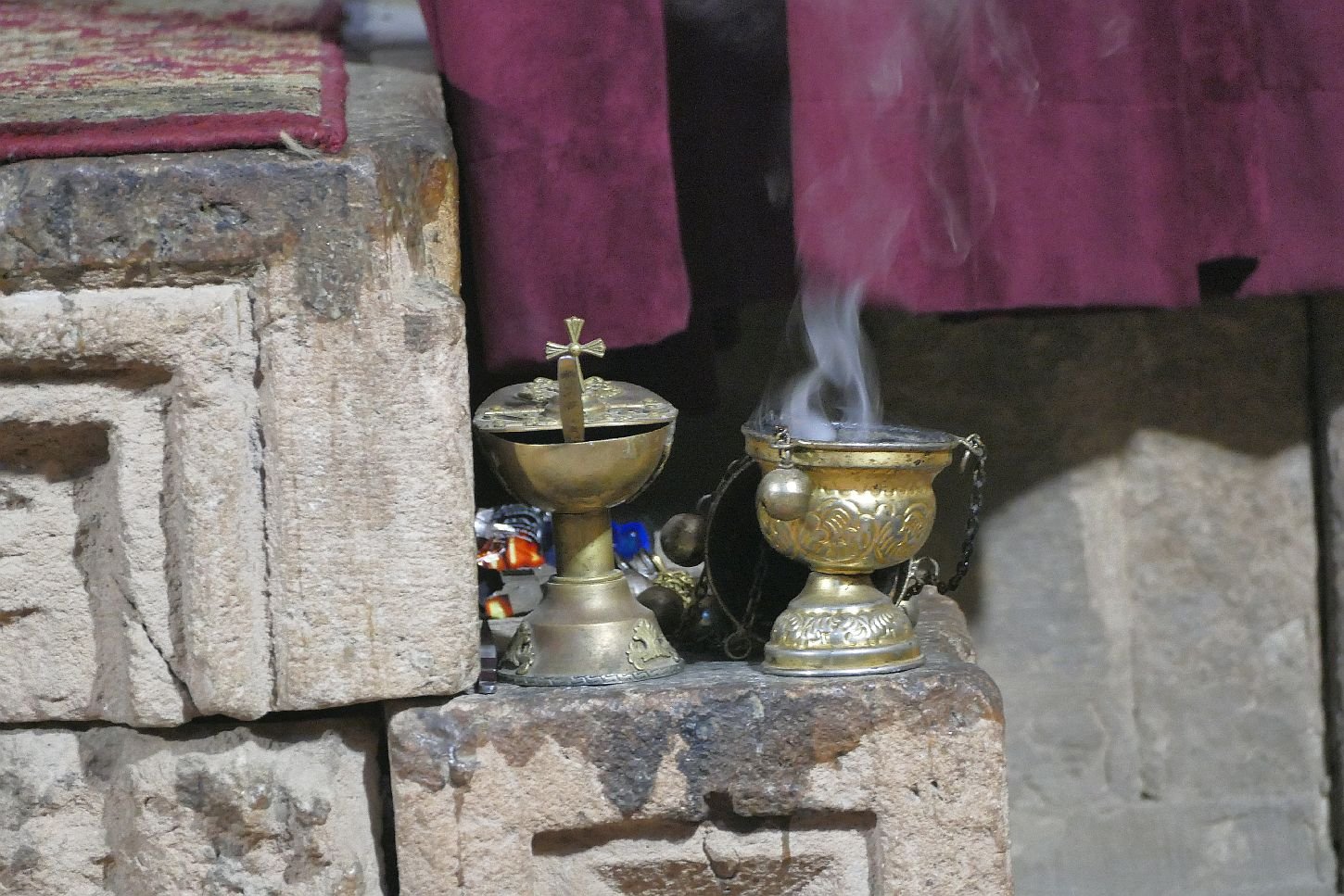Geometry
Religion plays a remarkable, and somewhat unusual, part in Armenia’s history. It also played a part in the choice of many of the key words which we listed in our previous Blog. Architecture, funerary monuments and monasteries are a rather obvious selection but history, identity, ironwork, stones and walking trails are also relevant.
For those of us thinking of Armenian Orthodox architecture, this little number (right) was rather a surprise. Garni Temple is at the heart of a UNESCO World Heritage site and is thought to be the only Greco-Roman building surviving in the former Soviet Union. For the sake of balance, however, it seems probably that Christianity converted or destroyed many temples long before the USSR disapproval of religion nearly completed the process.
To say that Garni Temple ‘survived’ is also a little generous, as this 1st (or possibly 2nd?) century temple (dedicated to Mithras or possibly a ruler’s tomb?), was destroyed by an earthquake in 1679 and was heavily restored in the latter part of the 20th century. The guide book says that this is one of the few historical monuments in Armenia which charges an admission fee which may well reflect on the somewhat two-edged sword of UNESCO protection – standards can be demanding and expensive.
But getting back to Armenian Orthodox, it is suggested that Syrian apostles began the work of converting Armenians from Zoroastrianism (probably a Persian import) to Christianity in the first century of the current era, thus laying the foundation for 4th century St Gregory the Illuminator to formally establish the Church of Armenia, become its first bishop, and be credited with converting Armenia’s King Tiridates the Great (aka Trdat III), thus making Armenia (probably!) the first nation to adopt Christianity as its state religion. And this is just one version of what happened. (https://en.wikipedia.org/wiki/Christianization_of_Armenia https://www.worldhistory.org/Saint_Gregory_the_Illuminator/)
Monasteries are good for tourism and so are walking holidays. You can combine the two – as we did in Armenia. We’ll take a look at some of the monastic structures here, and revel in the walks and wild flowers next time.
Armenian ecclesiastical buildings are usually built of stone. The local volcanic rock provided plentiful and colourful tuff, plus black basalt and grey/green andesite.
Image right: built from its local geology - a classic Armenian monastery building constructed from the local tuff
The guide book suggests that timber suitable for building purposes was unavailable (hence thick walls to support heavy stone roofs), a statement which Terroir finds somewhat puzzling. An, albeit rapid, internet search hasn’t clarified the situation, so comments from anyone with further information on this statement would be welcomed.
Earth quakes were also a factor in design and an early form of concrete was used to form a core within the tuff walls, to provide the necessary stability. Later, niches (left) were also incorporated to increase flexibility during quakes.
The monastery and church buildings that we saw reminded us of a combination of a geometry lesson and a box of children’s building bricks. Don’t get us wrong, they are a delight to visit but the photographs below will probably illustrate why we give this apparently uncomplimentary description.
The basic construction was based on a box either square or rectangular in plan with a pitched roof and often two extra gables on either side. On top of this was erected a cylinder (a tambour) which in turn supported a cone (the cupula).
External detailing is varied, fascinating and often intricate:
Inside the churches there is no iconostasis to separate the nave from the sanctuary, as used in other orthodox traditions, but a curtain which the clergy draw when preparing for various parts of the service.
A key part of all these sites are Khachkars or memorial stones, beautifully decorated, and erected outside churches and in many other places as well. The earliest known khachkars are said to be 9th century and were created to commemorate many different events. Understandably, salvation for the soul seems a common purpose but we were told they may also commemorate victory in battle, or the completion of churches and other buildings. Each tells its own story in symbols and pictorams. At Noratus in central Armenia (near Lake Sevan) is an entire cemetery of densely packed Khachkars. Our photographs can only hint at the spectacular nature of this piece of religious heritage, the largest such site still remaining within Armenia.
By our standards, this is a brief blog and we were also going to tell you about two other iconic pieces of Armenian architecture which had references to key words such a ‘ironwork’ and ‘obsidian’. This blog has run out of time, however, due to one of us being technically on convalescence after some creative hospital interventions. You may well be relieved to be released but we leave you with our favourite ‘ironwork’ pictures.





















